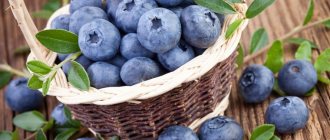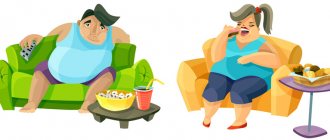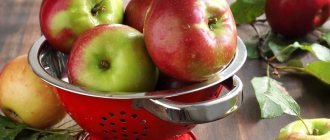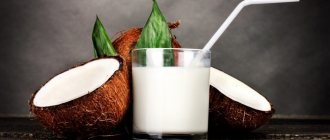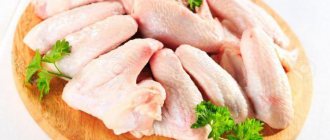12/09/2014 / Meat products
| Lard, BZHU and calorie content per 100 g of product | |||
| Calorie content 797 kcal | Proteins 2.4 g | Fat 89 g | Carbohydrates 0 g |
Lard is a traditional product of many nations. It is a mistake to think that lard is common only in Slavic culture. Since ancient times, this product has been widely used by peasants in European countries. Although one thing is certain: countries with a predominant religion of Muslims and Jews certainly cannot boast of such a national dish due to their beliefs.
Calorie content of lard
Lard contains about 900 kcal per 100 g of product, which is much higher than the calorie content of many other products. The benefits of lard may end before they begin if they are abused, because excess fat in the body has not led to anything good, but only contributed to the development of various diseases.
If you do not suffer from excess weight, even a slight one, then it is recommended to eat no more than 50 g of this product in the classic version of preparation, when it is simply salted. If you have fat on your sides and you are unhappy with your weight, it is better to temporarily give up lard, or consume no more than 20 g.
https://youtu.be/iERxBCUIu4c
Consumer Reviews
- I can't imagine my life without lard. Living in Ukraine, you see this product everywhere: at a party, in a village, at the market. I like smoked food most of all, but after learning about its dangers, I decided to give it up. It’s better to just eat salted lard. There are more benefits, but no less pleasure from it. I can’t say anything about the effect on the body; I have nothing to compare with and it’s difficult to assess the difference between using and refusing the product. This is because I have eaten it all my life and I can say for sure that there were no unpleasant sensations from it.
- Unfortunately, for me lard is a taboo. And not because I am against it, but on the contrary - it tastes so good to me that I overeat my daily allowance. As a result, we end up with extra pounds. I hope that someday I will learn to control my eating behavior and be able to limit myself to 30 grams of lard per day.
- When my menstrual cycle was disrupted, in addition to the main therapy, the doctor also prescribed me to include various foods with polyunsaturated (and mono) fats in my diet. I am not naturally slim, so I have struggled with excess weight all my life. I got used to limiting myself in food, especially fatty foods. After these problems, I reviewed a lot of information about fats and came to the conclusion that I was wrong before. I started eating nuts, avocados, butter and even lard. Of course, everything is within reasonable limits. After a couple of months, everything returned to normal, and now I don’t experiment with my health, but learn to choose healthy products. And the main thing is that now I’m not afraid to eat lard!
Source
Options by variety
Below we will look at the table of calorie content of lard per 100 grams of product.
- The calorie content of salted pork fat is 816 kcal.
- The calorie content of salted lard with a layer is 622 kcal.
- Fried lard contains 753 kcal.
- Boiled lard contains 500 kcal.
- The calorie content of smoked lard is 815 kcal.
Video: “Lard: harm or benefit?”
Posting ads is free and no registration is required. But there is pre-moderation of ads.
Lard is a traditional product of many nations. It is a mistake to think that lard is common only in Slavic culture. Since ancient times, this product has been widely used by peasants in European countries. Although one thing is certain: countries with a predominant religion of Muslims and Jews certainly cannot boast of such a national dish due to their beliefs.
Pork lard is rich in B vitamins, including vitamin A, vitamin E, PP, and vitamin C. Together, these vitamins maintain a healthy state of the body, strengthen defenses and nourish cells with essential substances. In addition to vitamins, lard contains macroelements and microelements such as magnesium, potassium, phosphorus, iron, zinc, selenium and many others.
What nutritionists say
If you decide to lose weight, it is not at all necessary to give up lard, because it contains essential fatty acids. However, if you decide to enjoy this product, then you should not exceed the permitted dose, and it is no longer recommended to consume any fats during the day. You should not eat this fatty product without anything, so as not to feel heaviness in your stomach.
Better take a small piece of rye bread. Today there are quite a large number of different diets in which you can eat a wide variety of foods. One such amazing diet is the Kwasniewski Diet.
This Polish nutritionist claims that it is more beneficial to lose weight using fatty foods than using fruits and vegetables, since they contain a large amount of water. That is why he recommends not to overload the stomach and drink water only in its pure form.
Jan Kwasniewski recommends starting your morning with a few chicken eggs fried in lard, as well as a piece of rye bread. Despite the fact that most often it is not recommended to wash down food, the nutritionist advises washing it all down with tea. Lunch is also quite filling. A small piece of chicken should be fried in breadcrumbs and lard. You can serve the dish with boiled potatoes or mashed potatoes cooked in water.
For dinner, you can treat yourself to a couple of cheesecakes in sour cream or cream sauce. It is better to stick to such a diet for no more than 5 days, and you can lose about 3 kilograms on it.
The downside is that it cannot be used by people with high cholesterol, otherwise it will have a detrimental effect on their health.
Useful and healing properties
This product causes a lot of controversy over whether it can be eaten, whether it provides even the slightest benefit to humans, and what it is. Despite the high calorie content of pork fat, it cannot be said that lard is strictly prohibited for people prone to obesity. Do not forget about the main principle of all those who lose weight - a calorie deficit, observing which, you can eat everything in small quantities.
Important! When we talk about the benefits of lard for the human body, we mean the salted or boiled state of the product, while smoked lard is extremely dangerous and harmful. It should be excluded from your diet, because these foods are not healthy. On the contrary, they are dangerous for the liver, kidneys, and heart.
The arachidonic acid contained in its composition has a beneficial effect on the body when it encounters viruses and bacteria. It promotes proper cholesterol metabolism and the removal of toxins from the body. Moreover, this effect is also achieved thanks to fatty acids other than arachidonic acid. So, if you are choosing a diet for high cholesterol, you can consult with your doctor about including lard in your diet.
- Powerful antioxidant effect.
Thanks to selenium, which is an antioxidant, a couple of pieces of lard are often recommended to be included in the diet of athletes, pregnant and lactating women, and smokers. These population groups are in dire need of this nutrient, although, according to research, selenium deficiency is found in 80% of people. By the way, garlic, which is often combined with lard, also contains this microelement.
- For cardiovascular diseases.
A small amount of fat will help your heart work better. It enriches heart muscle enzymes and cell membranes with healthy fats. Due to the fact that it helps the body remove excess toxins, blood vessels are cleansed.
- Normalizes metabolism.
Lard has a beneficial effect on human metabolism. Since the fats contained in the product dissolve under the influence of body temperature, they are easily digestible. A feeling of fullness occurs after just a couple of slices of lard, which reduces the likelihood of overeating.
Daily consumption of pork fat promotes more efficient flow of bile and improves the functioning of the digestive system.
As you have already learned, this product contains a fairly high percentage of mono- and polyunsaturated fatty acids, which play a very important role in the female body. They help normalize the regular menstrual cycle, proper hormone production and improve the condition of the skin and hair.
Doctors and nutritionists strongly recommend that women consume healthy fats in an amount of at least 1 g per 1 kg of body weight. Those losing weight should not neglect this rule; it is only important to learn to distinguish healthy fats from harmful ones.
Did you know? Lard is free of radionuclides and carcinogens, so housewives are not afraid to use it when frying. Even at high temperatures, it does not smoke and, accordingly, does not emit dangerous carcinogenic substances. Interestingly, lard rarely causes allergies, which means it can be eaten on a hypoallergenic diet.
Secrets of the recipe
Appetizer “Lard with garlic”
100 g of this snack contains 540 kcal.
Ingredients:
- 300 g salted lard;
- 2 medium cloves of garlic;
- greens and black pepper to taste.
Cooking steps:
- Twist the lard through a meat grinder along with the skin.
- Finely chop the greens with a knife or in a blender.
- Pass the garlic cloves through a press.
- Add a little ground black pepper to the resulting mixture.
Chocolate candies with lard
There are 678 kcal per 100 g of delicacy.
Ingredients:
- 50 g raw lard;
- 50 g butter;
- 65 g dark chocolate;
- walnuts and cinnamon to taste.
Cooking steps:
- Grate the lard on a fine grater and form into balls, then put them in the freezer for half an hour.
- Melt the chocolate and butter in a water bath. Add chopped nuts and cinnamon to this mixture.
- Place the lard balls on long sticks and dip them into the glaze, then put the candies in the freezer until completely hardened.
Potatoes with lard on skewers
100 g of this juicy and tasty dish contains 310 kcal.
Ingredients:
- 10 medium-sized potatoes;
- 100 g lard with meat layer;
- 1 tsp. vegetable or olive oil;
- salt and pepper to taste.
Cooking steps:
- Peel the potatoes and wash them.
- Place the potatoes on the fire, bring to a boil and cook for 8 minutes.
- Cut the lard into small pieces, salt and pepper it.
- Remove the potatoes from the water and cut them into halves, then place a piece of lard between them and connect them using a skewer (it should be soaked in water for 20 minutes so that it does not burn).
- Place the potatoes on a baking sheet lined with foil and brush with oil.
- Bake for 20 minutes at 200 degrees.
- Before serving, you can sprinkle with cheese and herbs.
Compound
Despite the high kilocalorie count, lard is well absorbed by the body. The fresh product contains:
- 1. Valuable types of animal fats, saturated and unsaturated acids (about 88%).
- 2. Vitamins A, E, D, B.
- 3. The active substance selenium, which is a powerful antioxidant. According to scientific research, almost 80 percent of Russians are deficient in this component, since it is not contained in the usual daily diet.
- 4. Arachidonic acid. It improves immunity, helps resist viruses and infections, and has an anti-inflammatory effect.
- 5. A group of minerals, including zinc, phosphorus, magnesium, calcium, copper.
Capacity of BJU in lard:
- proteins - 2.4%;
- fats - up to 89%;
- carbohydrates - absent.
The energy value of 100 grams of lard allows you to compensate the body’s daily costs by 20-30%
.
What are the benefits of lard?
Let's also talk about the beneficial properties of lard.
- This product contains a fairly large amount of vitamins, which has a positive effect on the immune system.
- Promotes muscle growth.
- Helps in regenerating damaged skin.
- Salo is digested quite quickly and easily.
- This product can also be used externally for various diseases.
- It can be stored for a very long time without spoiling.
How many calories are in 100 grams of boiled pork lard?
Boiled lard is a common dish on the modern table. It gained its popularity for its mild taste and tenderness that appears after heat treatment. During the cooking process, lard can absorb the aroma of spices, acquire a spicy flavor and a pleasant warm hue.
Depending on the recipe, boiled lard can be pre-stuffed with garlic, carrots and pepper before cooking. Lard is cooked in polyethylene so that the product does not lose its taste and nutritional value. An analogue of lard boiled in water is baked lard in foil.
IMPORTANT: During the cooking process, lard melts and therefore loses part of its nutritional value and decreases in volume by approximately 40-50%. So we can say that boiled lard is a “more dietary” product than salted or smoked lard.
Boiled lard
How to salt lard tasty and correctly
Do you love lard, but don't know how to salt it properly? Then this video is especially for you. In this video, the author will share his secret of salting tasty and soft lard.
https://youtu.be/aZodzDJuyRA
We also suggest that you study information about the calorie content of garlic and how to consume it, because it’s hard to imagine lard without this product. No less useful will be an article that tells you the calorie content of cabbage rolls and how to eat them.
Also find out how to learn how to count calories for weight loss if you are watching your figure.
Dear readers, do you like to enjoy a piece of delicious salsa with borscht? Did you know how many calories are in lard? Do you make any unusual dishes from this product, or do you prefer to use it in the classic version? Share your proven and delicious pickling and smoking recipes.
Author of the publication
Negative effects and possible side effects
It is obvious that any food product can bring not only benefits, but also harm to the human body. Let's clarify in what cases and under what conditions pork subcutaneous fat will negatively affect health.
The first and most important thing is the volume of lard consumed. If you eat 200 g, it will not bring anything good. Rather, on the contrary, fat will be deposited on the body, adding extra pounds to you, swelling will increase and your overall health will not be the most pleasant.
It is not recommended to eat smoked or fried lard. After appropriate processing, the product becomes “empty” of useful substances, that is, the above-mentioned fatty acids and vitamins. But now it is dominated by bad cholesterol. If you can’t bear to deny yourself a piece of smoked lard, then cook it yourself.
You don’t know how and with what the product was smoked in industrial production. And in this situation, there is a possibility of even getting poisoned. In this case, you need to know what first steps to take and “how to eat if poisoned.”
Daily consumption rate
There is no approved figure for how much lard a person can eat per day.
This indicator is influenced by:
- Floor. Men are recommended to consume more of the product. For women, the standards are reduced, and pork fat is used the least in children's diets.
- Season. Experts say that during the cold period the body especially needs fat.
- Physical activity. The more energetically a person moves, the more product it is appropriate to eat.
The minimum daily intake is about 10 g of fresh lard per adult in the absence of contraindications. Men with significant physical activity from time to time can afford up to 70 g, and women - up to 50 g of the delicacy, if they do not consume other fats. Those who love high-calorie foods should exercise moderation.
The optimal daily amount of lard in the menu for an adult is about 20-30 g.
High-calorie products quickly fill you up. It is appropriate to eat it even when losing weight. The main thing is to eat fatty foods in the morning and not overeat. This will allow you to recharge yourself with energy for the whole day, while calories will not linger in the body as excess weight.
Nutritionists recommend seasoning the product with garlic, horseradish, mustard or hot pepper. This approach improves the taste of the dish, increases the body's defenses and promotes better absorption of fatty foods. It is appropriate to use lard as a snack for alcohol. It is eaten immediately before drinking strong drinks. The delicacy slows down the process of fluid absorption in the gastrointestinal tract, and thanks to alcohol, fat is digested more easily.
How to use it correctly
Is lard good for pregnant and lactating women? There are no absolute contraindications for expectant mothers. However, excess salt is prohibited for edema, as it retains water. The body of a pregnant woman tends to store “for future use” not only water, but also nutrients. The consumption of lard, as a high-calorie and salty product, should be limited.
Nutrition for nursing mothers can include unsmoked bacon from the age of 3-5 months, if the child does not have digestive problems. Lard is a hypoallergenic product, but it is difficult to digest. It should be introduced into the diet gradually, observing the child’s reaction. A woman should remember the high energy value of this product and avoid lard with spices. The best choice is to buy fresh, pickle it yourself and eat it rarely, in small quantities, as a delicacy.
For the human body, a healthy daily fat intake ranges from 60-90 g. Women and overweight people should stick to the lower limit of the norm. Men can eat a little more fat, their muscle mass will process everything.
Since the daily intake of fat is not only its “pure” intake, but also hidden fats, of which there are many in finished products. Then the norm of lard per day is no more than 30-50 g. This is a thin piece for a morning sandwich, provided that you no longer eat butter that day. A healthy person can eat 100-150 g of salted bacon per week.
It is worth noting that natural lard will provide more nutritional benefits than sausage. It contains no dyes, internal animal fat, stabilizers or other chemical additives. The calorie content of bacon is slightly higher than the energy value of industrial sausages. The salt content in these products can be called equivalent.
They try to completely exclude high-calorie and salty lard from a woman’s diet, citing the reason for preserving her figure. It can ruin your waistline only with excessive consumption. Fresh (not overcooked) lard 2-3 times a week will replenish your metabolism with healthy fatty acids, fat-soluble vitamins and important microelements.
Lard in folk medicine: treatment with lard
- Joint pain
: lubricate the joint with lard (melted lard), cover the top with compress paper, wrap it in a warm cloth or down scarf, and leave overnight. For such a compress, you can use regular lard if you chop it finely or grind it in a meat grinder. It's good to add more honey. - Joint injuries
: one tablespoon of table salt is mixed with 100 grams of lard and rubbed into the joint area. Then apply a warm bandage as in the first case and leave overnight. - Mastitis
: old lard applied to the breast will help stop inflammation. It can be crushed, or you can simply cut it into thin slices.
- Weeping eczema
: take 2 tbsp. lard (unsalted, melted), 2 egg whites, 100g nightshade grass and 1 liter of celandine juice. Stir, leave for three days, then this mixture can be applied to the affected areas. - Toothache: peel a slice of lard from the skin, place it between the tooth and gum. After 15-20 minutes the pain should subside.
- Heel spur
: make an ointment from lard (unsalted - 100g), one chicken egg and 100g of vinegar (essence). Mix everything and leave until the lard is completely dissolved. Occasionally the ointment needs to be stirred. As soon as the lard dissolves, you can use it. They do it this way: the heel is steamed, a cotton swab is soaked in ointment and applied to the heel. The tampon can be secured in any convenient way and left overnight. In the morning, wash your foot with warm water. In five days the spur should go away.
A product such as lard is often removed from the diet. This is due to fears of gaining extra pounds due to the high calorie content. However, even nutritionists say that a small amount of a quality product will only be beneficial. The main thing is to know the rules for its use and give preference to the salty product.
Benefit
If you follow the tips described above, lard will bring many benefits to the body.
- Saturates the body with essential substances and microelements.
- Helps remove harmful cholesterol from the body. This is surprising because the product also contains cholesterol.
- Fat-soluble vitamins in the composition provide increased immunity and protective properties of the body.
- Due to its enveloping properties, it normalizes the activity of the gastrointestinal tract.
- The high energy value of lard allows you to increase performance. For this, 1-2 slices per day will be enough.
- It is useful to use lard for people suffering from bronchitis.
- Has a beneficial effect on the functioning of the heart and blood vessels.
Contraindications
Before you go to the store for this high-calorie product, see if you have any contraindications for its use. These include the following health problems.
- Atherosclerosis and other heart problems.
- Liver diseases. This is due to the increased load on this organ after consuming such a fatty product.
- Gallbladder problems. There is also an increased load on him. That is why it is not recommended to be given even to healthy children under 3 years of age.
People who have recently undergone complex operations need to gradually introduce this product into their diet so as not to unnecessarily burden an already weakened body. In some cases, colic in breastfed babies is also associated with the consumption of lard by the nursing mother.
To find out whether lard is harmful or beneficial, see the video below.
Calories, kcal:
Proteins, g:
Carbohydrates, g:
Lard is solid animal fat that is deposited under the skin during special fattening. Lard or, as a rule, pork or lamb lard is called fat tail fat; goat and beef lard are used extremely rarely. Lard with a large number of meat veins is called or. Classic lard is white or soft pink in color, with a thin skin of light brown color and dense consistency.
Lard is considered an original Russian product, but this is not entirely true. In Ancient Rome, slaves in the galleys were fed lard, which was inexpensive and satisfying; it charged them with energy and gave them strength for a long time. Lard in various variations is present in the cuisines of many countries, both European and Asian.
Calorie content of lard
The calorie content of lard is 797 kcal per 100 grams of product.
The fats contained in lard reduce the risk of stroke, since solid fats are absorbed much better and faster. Saturated and unsaturated fatty acids, especially arachidonic acid, are necessary for the body to maintain a normal immune system (calorizator). Linoleic acid helps preserve the myelin sheath of nerve cells; the product contains a lot of cholesterol, but it is “correct”.
Harm of lard
Lard is a high-calorie product, so eating too much lard is not good for anyone. The daily intake of lard does not exceed 15-20 grams, this is enough to gain strength and a boost of energy. Maximum - 30-40 grams.
Selection and storage of lard
The choice of lard is a matter of individual taste, but in any case, the lard should be white, a pinkish tint is possible, but there should be no yellow, as well as a thick skin (signs of an old animal). Fresh lard should be stored in the refrigerator for several days or in the freezer for 2-3 months.
The nutritional value
Lard is almost entirely fat. There are no carbohydrates in it. The protein to fat ratio is 1:66.3. The full chemical composition of lard (excluding skin) is given in the tables.
| Pork lard | ||
| Nutrients | Contents per 100 g of product | As a percentage of daily intake |
| Vitamin PP | 0.1 mg | 0,5 |
| Niacin | 0.1 mg | — |
| Vitamin E (TE) | .1.7 mg | 11,3 |
| Vitamin A | 10 mcg | 1,1 |
| Potassium | 14 mg | 0,6 |
| Calcium | 2 mg | 0,2 |
| Sodium | 21 mg | 1,6 |
| Phosphorus | 13 mg | 1,6 |
| Chlorine | 4 mg | 0,2 |
| Copper | 10 mcg | 1 |
| Iron | 0.1 mg | 0,6 |
| Iodine | 9.7 mcg | 6,5 |
| Selenium | 0.2 mcg | 0,36 |
| Zinc | 0.11 mg | 0,9 |
